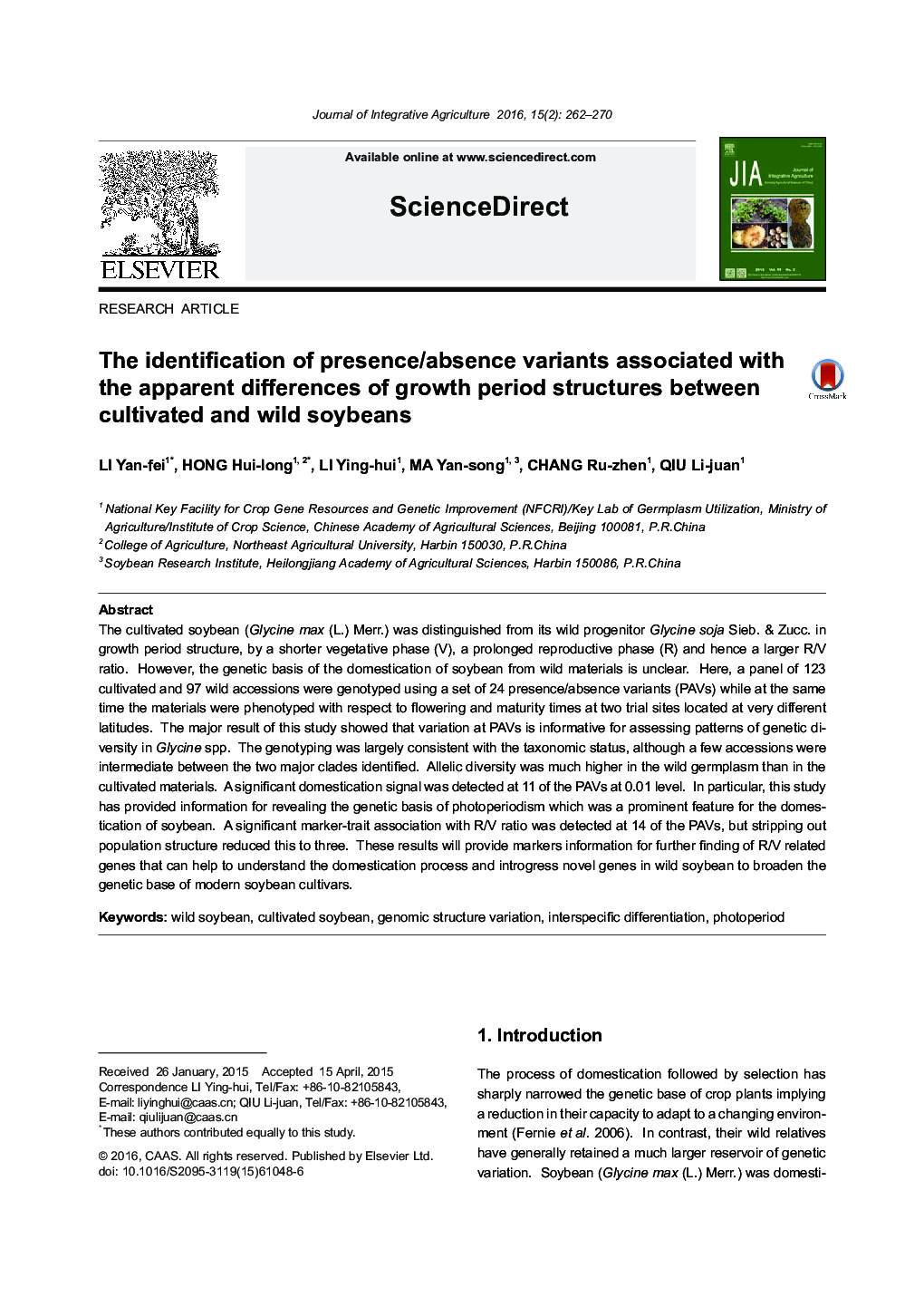| Article ID | Journal | Published Year | Pages | File Type |
|---|---|---|---|---|
| 10180042 | Journal of Integrative Agriculture | 2016 | 9 Pages |
Abstract
The cultivated soybean (Glycine max (L.) Merr.) was distinguished from its wild progenitor Glycine soja Sieb. & Zucc. in growth period structure, by a shorter vegetative phase (V), a prolonged reproductive phase (R) and hence a larger R/V ratio. However, the genetic basis of the domestication of soybean from wild materials is unclear. Here, a panel of 123 cultivated and 97 wild accessions were genotyped using a set of 24 presence/absence variants (PAVs) while at the same time the materials were phenotyped with respect to flowering and maturity times at two trial sites located at very different latitudes. The major result of this study showed that variation at PAVs is informative for assessing patterns of genetic diversity in Glycine spp. The genotyping was largely consistent with the taxonomic status, although a few accessions were intermediate between the two major clades identified. Allelic diversity was much higher in the wild germplasm than in the cultivated materials. A significant domestication signal was detected at 11 of the PAVs at 0.01 level. In particular, this study has provided information for revealing the genetic basis of photoperiodism which was a prominent feature for the domestication of soybean. A significant marker-trait association with R/V ratio was detected at 14 of the PAVs, but stripping out population structure reduced this to three. These results will provide markers information for further finding of R/V related genes that can help to understand the domestication process and introgress novel genes in wild soybean to broaden the genetic base of modern soybean cultivars.
Keywords
Related Topics
Life Sciences
Agricultural and Biological Sciences
Agricultural and Biological Sciences (General)
Authors
Yan-fei LI, Hui-long HONG, Ying-hui LI, Yan-song MA, Ru-zhen CHANG, Li-juan QIU,
